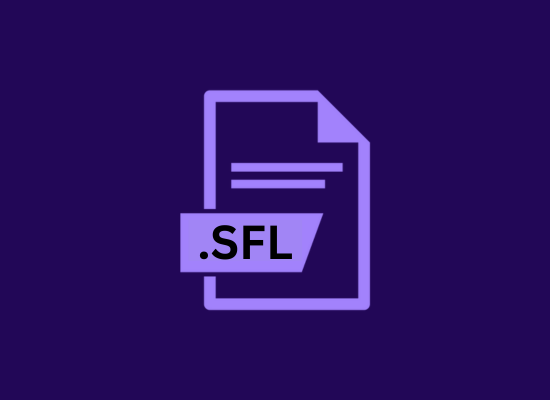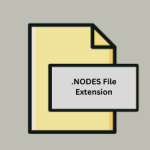.SFL File Extension

Sound Forge Pro Sound Data File
| Developer | MAGIX |
| Popularity | |
| Category | Audio Files |
| Format | .SFL |
| Cross Platform | Update Soon |
What is an SFL file?
In the digital realm, various file extensions serve specific purposes, and the .SFL file extension is no exception. Standing for “Sound Forge Pro Sound Data,” .SFL files are primarily associated with the Sound Forge software by Sony.
This article delves deep into the .SFL file extension, exploring its origin, structure, and how it’s used in the modern tech landscape.
More Information.
Historically, .SFL files were designed to store temporary audio data for Sound Forge. The primary purpose was to facilitate efficient audio editing, allowing users to work on large audio files without compromising performance.
Over the years, the usage of .SFL files has expanded, still retaining its core function in professional audio editing.
Origin Of This File.
The .SFL file extension has its roots in the audio editing industry, particularly tied to the Sound Forge software, a professional digital audio editing suite.
Developed by Sony, this tool has been instrumental for audio engineers and enthusiasts, leading to the creation and use of .SFL files.
File Structure Technical Specification.
.SFL files are not standalone files but are part of a larger ecosystem within the Sound Forge software. Typically, they accompany a .SFV file (Sound Forge Metadata) and the actual audio file, usually in a .WAV format.
The .SFL file itself contains metadata and time-stamp information crucial for audio synchronization and editing processes.
How to Convert the File?
Converting .SFL files directly is not typical because .SFL files are not independent audio files but rather supplementary files that contain metadata for audio editing in the Sound Forge program.
They are used in conjunction with actual audio files (like .WAV or .MP3 files) and usually don’t hold audio data themselves. You can convert the associated audio file to different formats.
Here’s how you can manage and possibly convert the content associated with .SFL files:
Using Sound Forge:
- Launch Sound Forge and open the project or audio file associated with the .SFL file.
- Once your audio file is open and you’ve made any desired edits, you can export or save the file in a different audio format.
- Go to ‘File’ > ‘Save As’ and choose your preferred audio format (e.g., .MP3, .WAV, .AAC) from the ‘Save as type’ dropdown menu.
- Specify your settings for the chosen format and save the file.
Using Audio Conversion Tools:
- If you have already exported your audio file from Sound Forge and wish to convert it to another format, you can use a dedicated audio conversion tool. Many free and paid audio converters are available online, like Audacity (free), Switch Audio File Converter (freemium), and others.
- Download and install your chosen audio converter.
- Open the audio converter and import the audio file.
- Select the desired output format and any necessary settings (bitrate, quality, etc.).
- Convert the file.
Using Online Conversion Services:
- If you prefer not to install additional software, you can use online conversion services like Zamzar, Online Convert, or Convertio.
- Visit the website of the online conversion service.
- Upload your audio file.
- Choose the format you want to convert your file to.
- Start the conversion process and download the converted file once it’s ready.
Advantages And Disadvantages.
Advantage:
- Efficiency in Editing: .SFL files make it easier to handle large audio files, ensuring that the software runs smoothly without consuming excessive system resources.
- Precision: The metadata and time-stamp information in .SFL files allow for precise audio editing and synchronization.
Disadvantage:
- Dependency: .SFL files are not standalone; they depend on the primary audio file and the Sound Forge software.
- Compatibility: Being proprietary to Sound Forge, .SFL files might not be directly usable in other audio editing software.
How to Open SFL?
Open In Windows
Using Sound Forge: The most straightforward method is through Sound Forge itself. Simply open the software and load the .SFL file alongside its corresponding audio file.
Open In Linux
Wine: While Sound Forge is not natively supported on Linux, users can run it using Wine, a compatibility layer that allows you to run Windows applications on Linux.
Open In MAC
Compatibility Layer or Virtual Machine: Similar to Linux, Mac users can rely on compatibility layers or virtual machines to run Windows applications and access .SFL files.
Open In Android
Directly opening .SFL files in Android are not feasible as these platforms do not support Sound Forge. However, users can work with the associated audio files using compatible audio editing apps.
Open In IOS
Directly opening .SFL files in iOS is not practicable as these platforms do not support Sound Forge. However the End user can work with the associated audio files using compatible audio editing apps.
Open in Others
For other systems, the feasibility of opening .SFL files depends on the availability of Sound Forge or compatible software. In some cases, running a virtual machine with Windows might be a solution.













